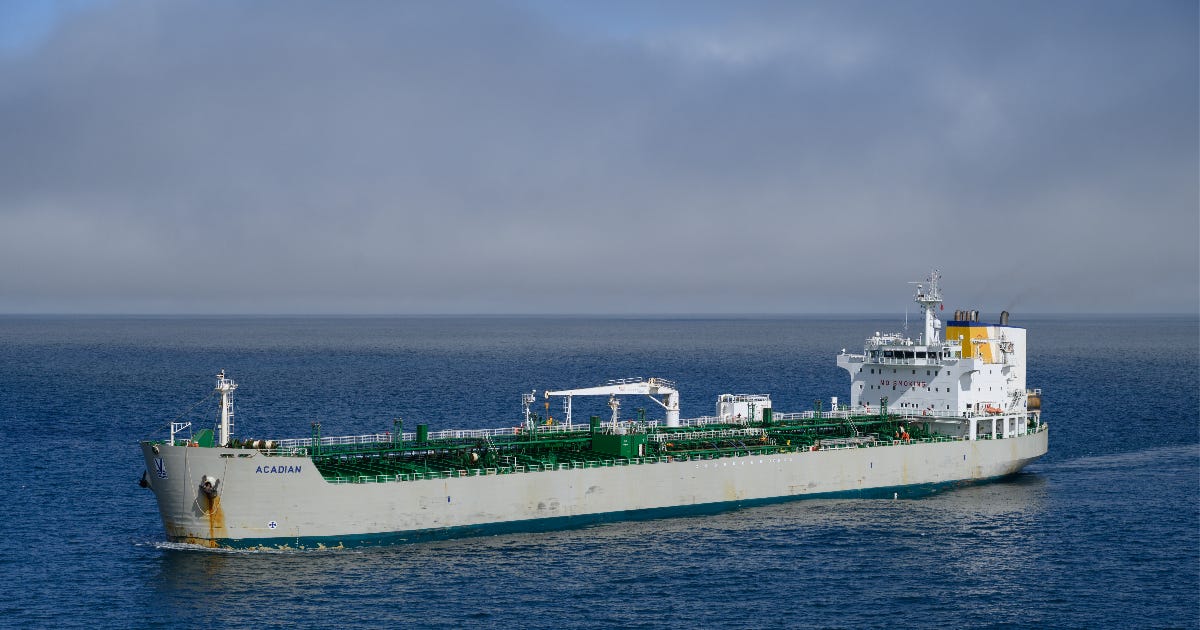Elizabeth May’s claims on B.C.’s north coast ignores centuries of maritime history
Green Party Leader Elizabeth May’s baseless denial that oil tankers will ever navigate the B.C. north coast completely ignores the decades of safe shipping in the area
Green Party Leader Elizabeth May’s baseless denial that oil tankers will ever navigate the B.C. north coast completely ignores the decades of safe shipping in the area, a reality made even more secure by modern navigation technology.
Green Party MP Elizabeth May warned reporters on Wednesday against the possibility of oil tankers navigating Hecate Strait, citing its dangerous conditions to justify a controversial “tanker ban” in the area.
“The inner waters between Haida Gwaii and the coast of Canada is something called the Hecate Strait,” May told reporters. “You should look it up.”
A brief search would show that Hecate Strait, a critical maritime passageway between Haida Gwaii and the mainland of British Columbia, has been a route for various types of maritime traffic—including oil tankers—for centuries.
“The water that flows through the sea has waves and currents that are extraordinary,” May further claimed. “They sometimes go down so low that they expose the ocean floor. That is why there has been a tanker moratorium on our North Coast.”
While the Hecate Strait is indeed known for being a dangerous body of water due to severe weather, strong winds, and rough waves, especially during winter storms, this claim is false and misleading and modern seafaring in the area is frequently conducted safely.
Indigenous peoples, particularly the Haida, Tsimshian, and Nisga’a nations, have also long navigated the Hecate Strait as part of their extensive maritime networks using canoes. The Haida, for instance, used it as a key navigational body of water, often relied upon when raiding coastal areas to capture slaves.
The arrival of European explorers in the late 18th century, such as Jacinto Caamaño and George Vancouver, further demonstrates the strait’s navigability. These early mariners charted the area despite its challenges, paving the way for fur trade routes and later commercial shipping.
As for the “tanker moratorium on our North Coast,” May’s comments, again, do not tell the full story.
The so-called “moratorium,” initially established as a “commitment” by the Pierre Trudeau government in 1972, was extended to include offshore oil and gas activities but has never been an absolute ban on all maritime traffic.
The Oil Tanker Moratorium Act, enacted more recently, specifically targets crude and persistent oil shipments, but only those exceeding 12,500 metric tonnes, allowing smaller vessels to continue operations and navigate the strait.
May’s comment that Hecate Strait is “the most dangerous body of water on the Canadian coastline, according to the government of Canada,” is also inaccurate.
True North could find no direct evidence that “the Canadian government,” specifically Environment Canada, has officially stated that the Hecate Strait is “the most dangerous body of water on the Canadian coastline.”
While secondary sources, such as articles by paddling enthusiast magazine writers and environmental reports, have described it as highly hazardous, these claims are not directly attributed to an official government ranking or document.
True North reached out to the Green Party for clarification on the source for May’s claim, but our calls were not returned.
Despite May’s warnings about the dangers posed by the strait’s conditions, historical records and current maritime operations indicate that oil tankers have safely navigated, and continue to navigate, these waters for decades, particularly those associated with the transportation of crude oil from Alaska to U.S. refineries.
Contrary to May’s claims, those tankers continue to operate and are often considered a crucial energy lifeline to those living in coastal communities.
While no major nautical disasters involving oil tankers have resulted in significant spills directly in Hecate Strait, the broader British Columbia north coast region has experienced a few incidents and “near-misses” with petroleum vessels.
Most recently, an American articulated tug-barge, the Jake Shearer, which transports fuel, separated from its fully loaded 80,000-barrel fuel barge during stormy weather in Hecate Strait, about 25 nautical miles southwest of Bella Bella. The barge drifted for several hours before being reconnected, but no grounding occurred, and no oil was spilled.



